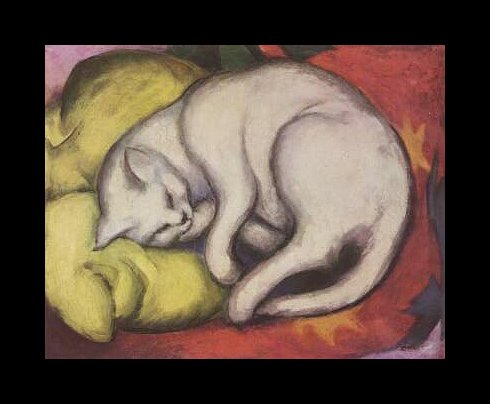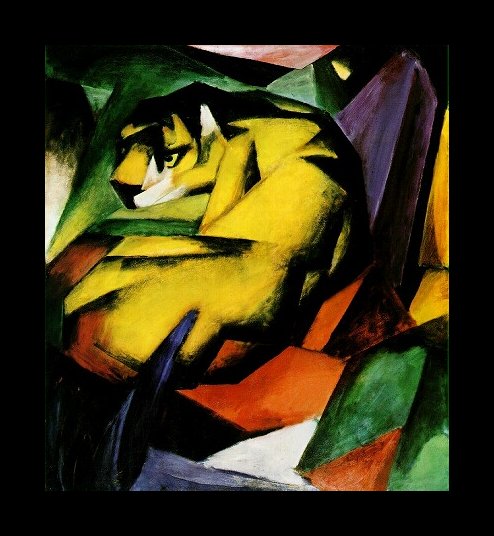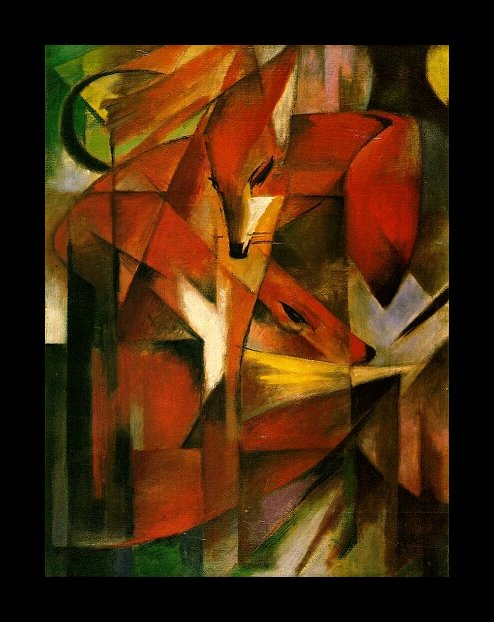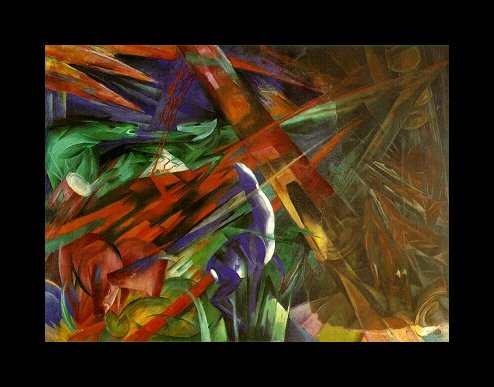Franz Marc (1880-1916)
Get a Marc Certificate of Authenticity for your painting (COA) for your Marc drawing.
For all your Marc artworks you need a Certificate of Authenticity (COA) in order to sell, to insure or to donate for a tax deduction.
Getting a Marc Certificate of Authenticity (COA) is easy. Just send us photos and dimensions and tell us what you know about the origin or history of your Marc painting or drawing.
If you want to sell your Marc painting or drawing use our selling services. We offer Marc selling help, selling advice, private treaty sales and full brokerage.
We have been authenticating Marc and issuing certificates of authenticity since 2002. We are recognized Marc experts and Marc certified appraisers. We issue COAs and appraisals for all Marc artworks.
Our Marc paintings and drawings authentications are accepted and respected worldwide.
Each COA is backed by in-depth research and analysis authentication reports.
The Marc certificates of authenticity we issue are based on solid, reliable and fully referenced art investigations, authentication research, analytical work and forensic studies.
We are available to examine your Marc painting or drawing anywhere in the world.
You will generally receive your certificates of authenticity and authentication report within two weeks. Some complicated cases with difficult to research Marc paintings or drawings take longer.
Our clients include Marc collectors, investors, tax authorities, insurance adjusters, appraisers, valuers, auctioneers, Federal agencies and many law firms.
We perform Franz Marc art authentication, appraisal, certificates of authenticity (COA), analysis, research, scientific tests, full art authentications. We will help you sell your Franz Marc or we will sell it for you.
Born in Munich, Germany, Franz Marc would become one of the best known German Expressionists of all time. Inspired to paint by his artist mother, Marc attended the Munich Art Academy. He traveled to Paris often to see the work of Impressionists of the era, and though he revered their work, was not entirely influenced by it. In essence, Marc’s style helped to opened up the flood gates for abstract art, though he did not live to see it. He volunteered for the service during World War I and was killed in action.
His catalog is notably dominated by animal images, from his work painting sweet pictures of kittens and dogs, like the well-known “Cat on a Yellow Pillow” (1911), to geometric images of horses, sheep, deer and exotic animals like “Tiger” (1912). His compositions sometimes consisted of animals that you couldn’t see right away, such as “Foxes” (1913). These compositions almost look fragmented, as though you were looking at a fox or a sheep in a broken mirror.



Marc’s use of color and warm, rich tones was in part harbored by his association with the group “Der Blaue Rieter” (The Blue Riders). Along with Kandinsky, he helped to found this group which was oriented with the importance of color and placed great value on expression and symbolism. Each color had a meaning to Marc; yellow represented femininity, blue was masculine and red was life and solidity.
While Marc had become obsessed with the study of animals, their organic nature and pulse within the world and their anatomy, he also wanted to show them from the inside. His paintings are highly emotional, as one would see with “The Fate of the Animals” (1913) where a blue deer is bucking and surrounded by jabs of harsh color. He became such a master of animal anatomy that he was even able to teach it for a while to other artists. However, this obsession lead to Marc becoming over ambitious, and he became frustrated with some of his more progressive pieces. Due to his unhappiness with them, he destroyed some of these works around 1908. Or did he? Could some of these pieces been saved, and hiding somewhere?

Another reason why there could be a great deal of Marc’s work unknown and unidentified is because he isn’t really a household name, though revered by the art community. Perhaps it is because he chose simple and sweet subjects, and not politically or socially driven masterpieces. Abstract art is also very hard to authenticate, but Marc was a master who understood painting, geometry and anatomy, and he had a rhyme and reason to his compositions. His work is very simple, and his subjects are un-detailed, but they still manage to invoke a sense of feeling and emotion.
One way to tell for sure if you have an original Marc, is to look at the subject matter. Animals are obviously his forte, but he could have also painted a great deal of other things while learning at the Munich Academy (late 1800s-early 1900s). A very small portion of his work, mostly of dogs, appears to have been painted with an Impressionistic hand, such as “Dog Lying Down”. In these paintings, his colors are far less vibrant, and his style leans more to the Romantic side. They contrast greatly from his later work with Abstract ideas. His geometric designs are clearly from Cubist ideals and his colors and themes are a result of his affiliation with the Blue Riders.
Marc’s catalog is also heavily filled with images of horses grouped together or alone. To him, they portrayed something free and pure, and later, spiritual. He found within animals, and especially horses, something innocent and wanted to portray that with color, symbolism and imagery.
Alas, the end of Marc’s life was nothing of the ideals that he portrayed in his paintings. He spent his last two years fighting in the war, and experienced fellow friend and artist August Macke die in the war before him. He left a journal, however, of those last two years, producing ideas for paintings that he was never able to create, and expressing his fear and hatred of war. Marc was hit and killed by shrapnel in March 1916 in Verdun, France.
Reviews
1,217 global ratings
5 Star
4 Star
3 Star
2 Star
1 Star
Your evaluation is very important to us. Thank you.
